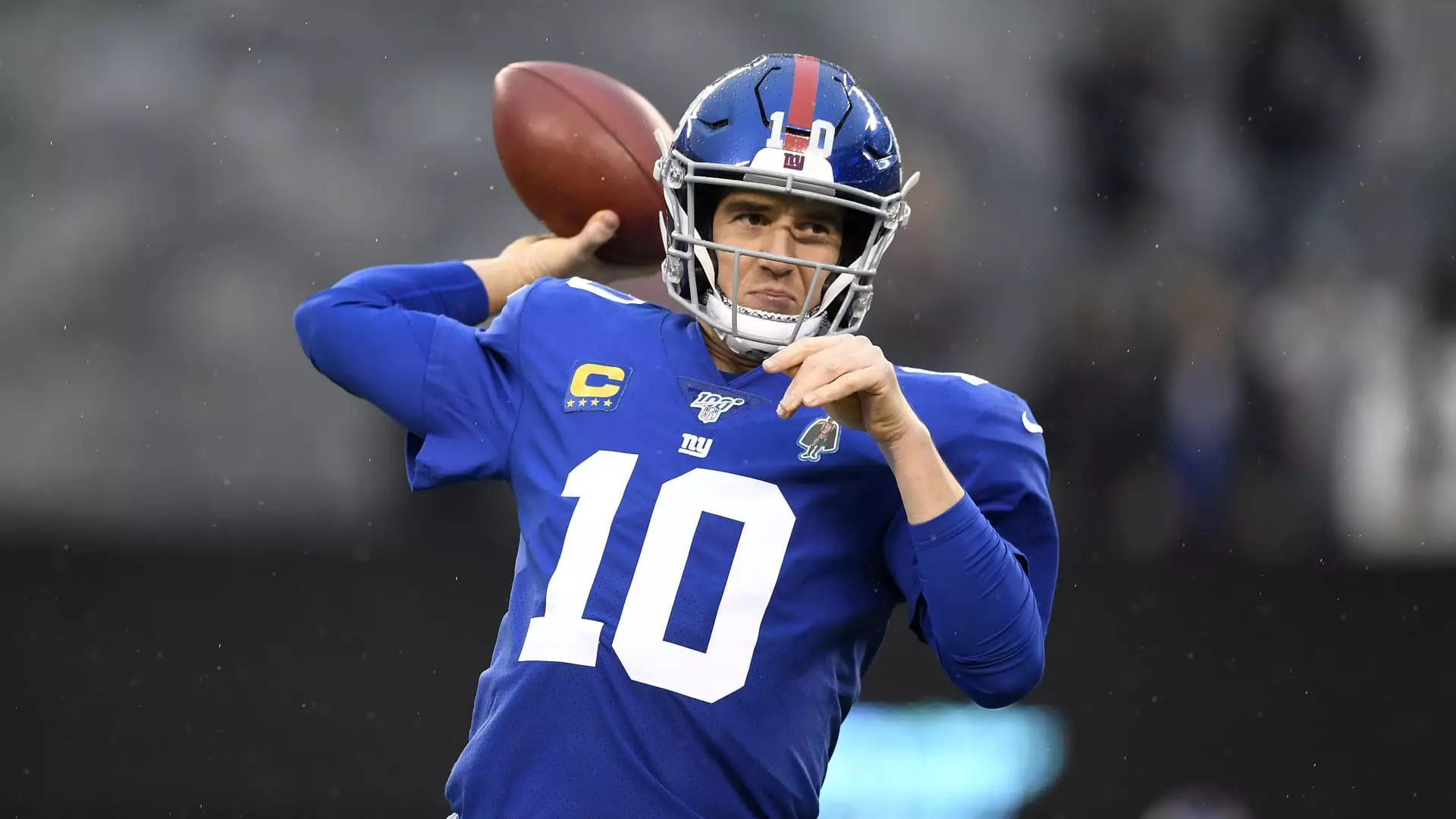Eli Manning’s candid admission that he cannot afford to buy a stake in his beloved New York Giants reveals more about the distorted state of professional sports valuations than perhaps he intended. Manning, once a legendary quarterback and now a wealthy entrepreneur, perceives the skyrocketing worth of NFL franchises as a barrier rather than an opportunity. His statement that “a 1% stake valued at $10 billion turns into a very big number” encapsulates the larger problem: sports team valuations have *grossly inflated* beyond their intrinsic worth, driven more by speculative investment than genuine asset value. It’s a dangerous trend that not only alienates passionate former players like Manning but also skews the long-term health of the league’s economic ecosystem.
The reality is stark: the NFL’s valuation bubble grows out of control, fueled by the league’s immense popularity, lucrative local and national broadcasting deals, and an insatiable appetite among investors eager to capitalize on the sports franchise phenomenon. For a former player like Manning, the dream of investing in the team he once led has become an unattainable fantasy—not because of a lack of desire or understanding, but because the price tags are disconnected from the foundational economic realities of pro sports. This disconnect signals a deeper malaise within the sports industry, where greed and competitive valuation overshadow prudent investment principles.
Spectacles of Wealth: The Overvaluation Gap Between Different Leagues
The valuation disparities between the NFL and other major sports leagues paint a clear picture of an increasingly speculative environment. For instance, CNBC’s NFL valuations, along with recent high-profile sales, point toward a league whose franchises are now valued at astronomical figures—$8 billion to $10 billion for historic teams like the Giants and 49ers, and even more for the Lakers in the NBA. These numbers are not only startling but also dangerously misaligned with the actual income-generating capacity or market fundamentals of these institutions.
Such overinflation risks creating “fake wealth,” where the perceived value is based more on future speculation than current profitability. This situation is reminiscent of the 2008 financial crisis, where asset bubbles burst and exposed the fragility of over-leveraged markets. For a center-right perspective that advocates for fiscal responsibility and market integrity, this unchecked escalation should serve as a cautionary tale; it questions whether these valuations ultimately add sustainable economic value or merely inflate shareholder and investor expectations to unsustainable levels.
Furthermore, these inflated valuations distort the investment landscape, making it increasingly difficult for genuine investors—like Manning himself, or less prominent but equally passionate minority owners—to participate without risking overexposure. The extreme valuation gaps also threaten to undermine the league’s credibility, as fans and small stakeholders may see the sport as a playground for billionaire speculators rather than a community-centered entertainment enterprise.
The Political Ramifications of a Valuation Bubble
The NBA’s Lakers selling at a $10 billion valuation, far surpassing their previous $7 billion valuation, underscores the accelerating trend—handsomely rewarded for sheer brand power but raising questions about real economic stability. From a center-right liberal viewpoint, these soaring valuations are evidence of a system increasingly driven by wealth consolidation and speculative excess.
This phenomenon poses multiple political challenges. It fosters a narrative that sports franchises are no longer just entertainment assets but are part of a broader plutocratic ecosystem managed by billionaires and private equity, often disconnected from their local communities. The recent allowing of private equity investment into NFL teams—up to 10% stake—further commodifies the teams, reduces their accessibility, and risks turning these monuments of community identity into financial playthings.
Manning’s own story exemplifies this paradox. His willingness to invest was hamstrung not by his lack of interest but by the grotesque prices that exclude even big-name sports heroes from ownership opportunities. This growing disparity exacerbates social divides—where a handful of ultra-wealthy investors can dominate ownership, leaving loyal fans and former players on the sidelines. It’s a consolidation of power that figuratively and literally disenfranchises the heart of the sports community.
Challenging the Elite-Driven Football Economy
The NFL’s valuation bubble exposes fundamental flaws in how sports franchises are perceived and valued in our modern economy. As a proponent of responsible capitalism, I see these inflated prices as a symptom of unchecked greed that undermines the league’s long-term viability. Where is the sustainable model in all this? Franchises cannot exponentially grow in worth without robust, stable demand rooted in actual community enrichment, competitive fairness, and financial prudence.
Despite his personal wealth and prestige, Eli Manning’s decision not to pursue ownership rights highlights the increasingly exclusive nature of team investing. His focus now on advising rookies and maintaining other sports interests suggests a pragmatic approach—recognizing that the current system favors the ultra-rich while sidelining those with genuine passion and legacy ties. It is a systemic failure when the market rewards abstract valuation figures more than the sport’s integrity or the traditional American values of small investors and community-driven enterprise.
The rising valuations serve as a warning sign for those who believe in a fair, balanced economic system. The sports industry’s current trajectory threatens to turn cherished franchises into speculative assets that benefit only a small billionaire class at the expense of broader societal interests. If unchecked, this trend risks hollowing out the soul of professional sports—transforming it into a playground for wealth accumulation rather than a showcase of athletic excellence and community pride.

